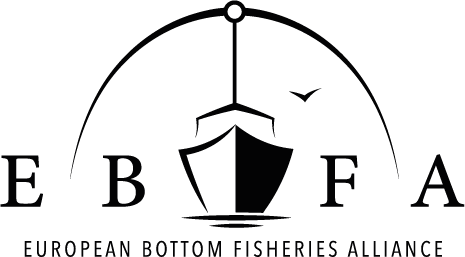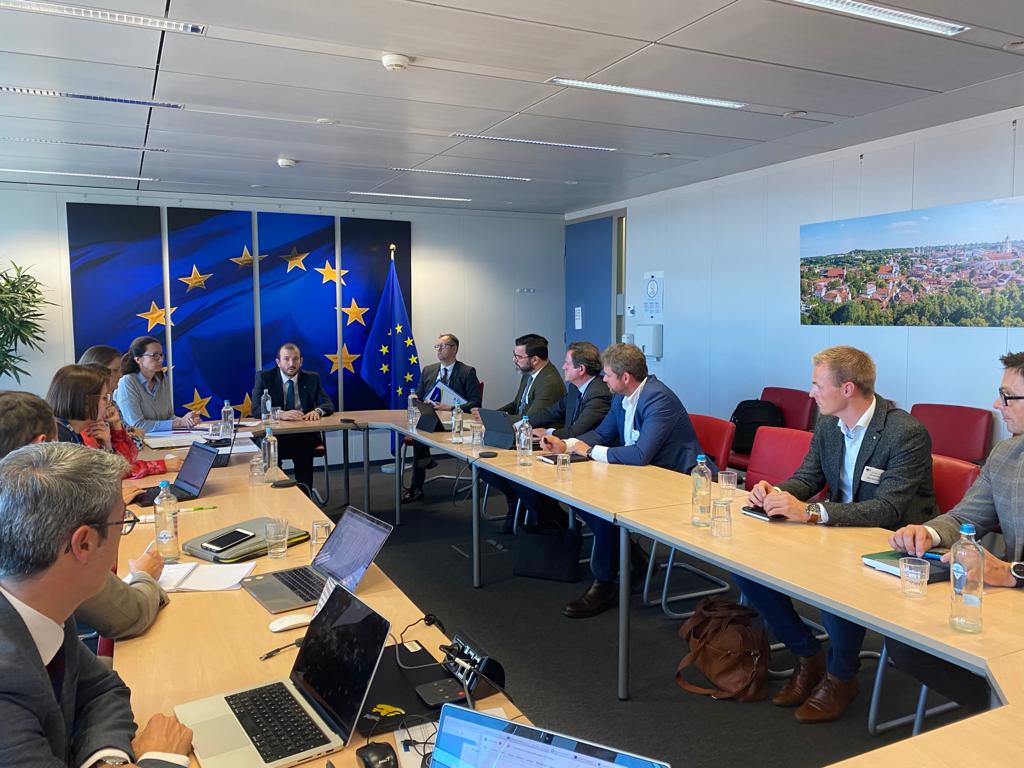European Commission to unveil roadmap to phase out active bottom fishing gears

- While showing no intention of reforming the Common Fisheries Policy (CFP), the Commission intends to cut down fisheries via fundamentalist environmental legislation.
- Seafood products such as whitefish, shrimps, and shellfish will have to be imported from countries like Russia and China.

Commissioner Sinkevičius began his mandate committed to maintain a balance between environmental, social, and economic factors. The sector is afraid that he will not end the legislative term living up to his word. The target is clear, to end bottom fishing in the EU at the cost of the fleet and the livelihoods attached to them. Selective quotation of science and facts, skewed interpretations and many promises of a bright future are being used as justification. But the reality is entirely different: Multimillion-euro losses, thousands of households affected and tons of fish wasted. Planned to be published this month, the Commission will propose an Action Plan to ban bottom mobile gears in 30% of our seas. Over the last year, the EBFA [1] has presented solid science to the Commission services showing how to better protect our seas while ensuring a future for fishermen and guaranteeing food security. Foregoing its duty of achieving a balance between an indispensable healthy food production and the protection of the environment, the Commission has chosen instead to follow the campaigns fabricated by the environmental NGOs and to put a conclusion before discussion and reason.
The Action Plan is part of the EU Biodiversity Strategy imposing the objective of protecting 30% of the Union waters by 2030, including a 10% under strict protection. As an economic sector fully dependent on the health of the oceans, the EBFA shares the need to preserve our seas. However, the sector fails to understand, as the leaked information indicates, that this protection comes with a gradual phase out of active bottom fishing gears in all existing Marine Protected Areas (MPAs) by 2030, by default and without regard to the needs of each MPA.
Iván López van der Veen, Chair of the EBFA, declared: “This approach stands in stark contrast with the scientific approach presented by the EBFA to Commission services on several occasions. The designation of MPAs may include many other conservation measures not linked to fishing, such as the protection of seabirds, mammals, or turtles. Why banning a perfectly regulated activity that does not impact the habitat or species to be protected? Restrictions should come from scientific analysis of each MPA, including the particular conservation needs as well as the trade-offs of any restriction, such as food security”.
The EBFA questions as well what constitutes a MPA. It is not clear in the legal basis and the pursued level of protection under the future Action Plan. In this context, the new Convention on Biological Diversity (CBD) – target 3 – pursues to ensure and enable that by 2030 at least 30% of coastal and marine areas are effectively conserved and managed through MPAs and other effective area-based conservation measures (OECMs), while ensuring sustainable use where appropriate in such areas, recognising and respecting the rights of local communities. What is more, the Natura 2000 Directives require an impact assessment [2] on a case-by-case basis and to take measures, such as area closures, only when justified in sites of Community importance (qualified as MPAs). The CFP [3] goes in the same direction, requesting that conservation measures must be compatible with socio-economic and production objectives.
The EBFA therefore considers the prohibition by default of bottom mobile gears in MPAs as an objective clearly disproportionate, unjustified, not based on the best available science, and contrary to international commitments. This simplified governance approach along the principle “no bottom contact in MPAs” throws overboard the need for scientific data and evidence which is fundamental for policy-making. Furthermore, the apparent intention of the Commission to authorise the vessels affected “to fish somewhere else” is also of concern, as it clearly would not compensate the drop in production. It would instead create displacement issues such as tension at sea, increased fuel consumption, inaccessibility to target species, and undesired consequences in the management of the fisheries and areas concerned. “Vessels fish in an area not on a whim, but rather because it is where it can be done more efficiently in all aspects”, declared Mr López.
According to DG MARE services [4], 13 105 fishing vessels employing 40 500 fishermen currently operate in MPAs. In 2019, EU vessels landed 124 103 tons of fish from these areas. A potential ban of bottom mobile gears in current MPAs (10%) can cause an overall economic impact of around 870 million EUR per year [5]. In terms of job losses in the fishing communities (including ancillary activities onshore), an extra 8 700 households will also be affected. These numbers would have to be multiplied at least by a factor of 3 since the total area covered by MPAs in EU waters will increase from 10% to 30% by 2030.
Iván López van der Veen, Chair of EBFA, declared: “Together with other pieces of legislation such as the Nature Restoration Law, the Deep-Sea Access Regulation, the effect of offshore windfarms and Brexit, the Action Plan comes as another nail in the coffin of bottom fishing in Europe. We are also suspicious of the lack of equal assertive action by the Commission towards other actors: Land pollution, oil, gas and offshore windfarms. In general, these are overlooked while the sector that actually depends on the health of the oceans is put aside. It is as if they wanted to eliminate uncomfortable witnesses”.
The EBFA reminds that the EU is already heavily dependent on whitefish imports caught by bottom trawlers from third countries. Mr López concluded: “70% Of the seafood consumed in Europe is imported. The Action Plan would only increase the (sea)food security gap in favour of countries like Russia or Norway which will continue business as usual and, mildly put, are giving a hard time to the EU. It will also increase the pressure on the environment of developing countries and their food systems as more fish is redirected to our markets to fill the void left by a diminishing Union fleet. The knock on and substitution effects of this measure have been ignored. The Commissioner seems to have forgotten his mandate to maintain the profitability of the fleet and to maximise food production in the EU, as clearly stated in the CFP and founding treaties of the EU”.
[1] The European Bottom Fisheries Alliance (EBFA) represents 20,000 fishermen and women and 7,000 vessels, both small artisanal actors and large-scale fishing vessels, across 14 EU Member States. More info at https://bottomfishingalliance.eu/.
[2] See article 6.3 Directive 92/43/EEC
[3] Art. 11 of CFP (1380/2013)
[4] Assessment of potential socio-economic impacts, DG MARE A4
[5] 290 million EUR in the potential reduction of value of landings for the EU fleets direct impact and around 580 million EUR in other ancillary activities onshore indirect impacts across the value chain.
Press Contact
Daniel Voces de Onaíndi, Secretary of the EBFA, info@bottomfishingalliance.eu Mobile +32 489 26 81 07